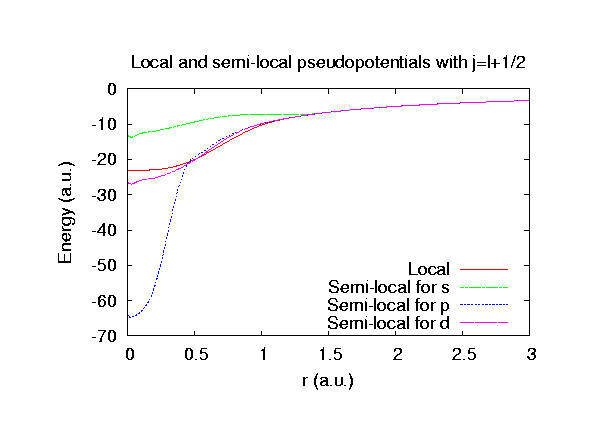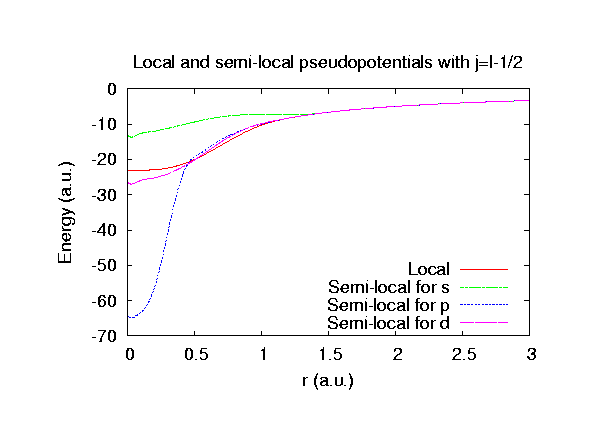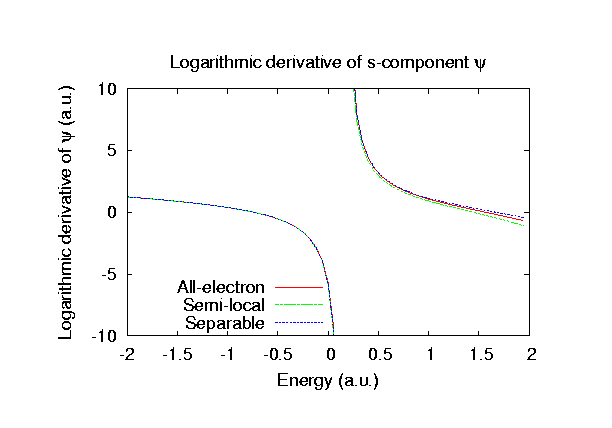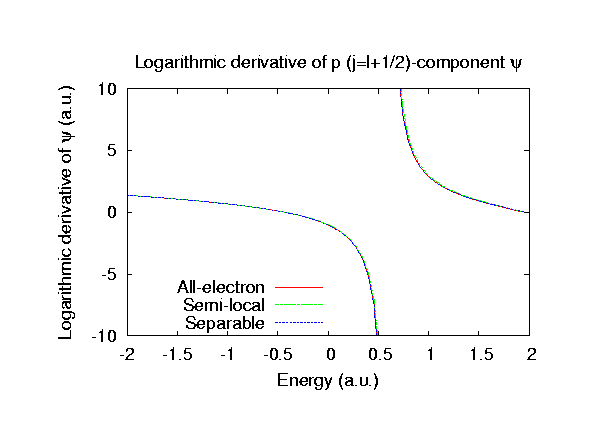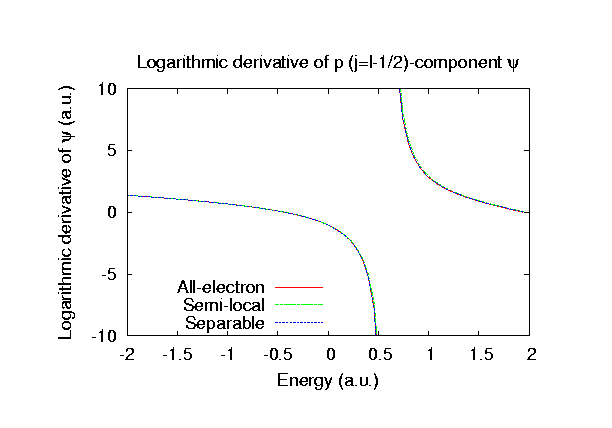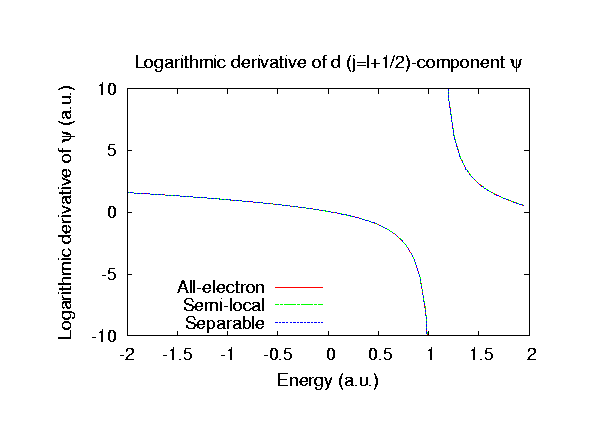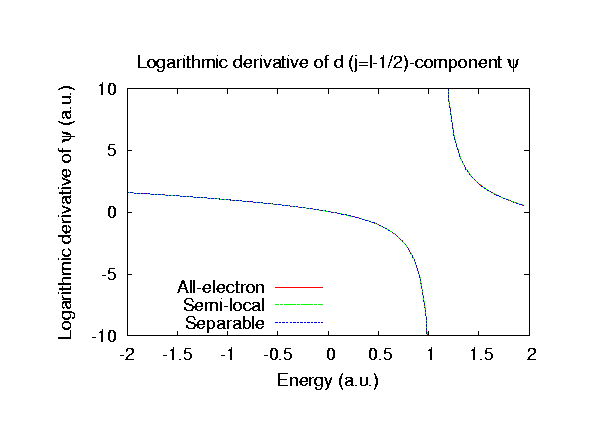
Fully relativistic pseudopotentials
Fully relativistic pseudopotentials generated by
the MBK (PRB 47, 6728 (1993)) scheme within LDA (CA11H) and GGA (PBE11H) which contain
a partial core correction and fully relativistic effects including spin-orbit coupling.
Pseudo-atomic orbitals
The number below the symbol means a cutoff radius (a.u.) of the confinement
potential. These file includes fifteen radial parts for each angular
momentum quantum number l (=0,1,2,3). The basis functions were generated by variationally
optimizing the corresponding primitive basis functions in the single atom and the diamond structure.
The input files used for the orbital optimization can be found at
Si_optH.dat
and
Sidia_optH.dat.
Since Si_CA11H.vps and Si_PBE11H.vps include the 2p, 3s and 3p states (10 electrons)
as the valence states, the minimal basis set is Si*.*H-s1p2.
Our recommendation for the choice of cutoff radius of basis functions is that
Si7.0H.pao is enough for bulks, but Si8.0H.pao or Si9.0H.pao is preferable
for molecular systems.
Benchmark calculations by the PBE11 pseudopotential with the various basis functions
(1) Calculation of the total energy as a function of lattice constant in the diamond structure,
where the total energy is plotted relative to the minimum energy for each case. a0
and B0 are the equilibrium lattice constant and bulk modulus obtained by fitting to
the Murnaghan equation of state. The difference between Si7.0H-s2p3d1 and Si7.0H-s3p3d2f1
in the total energy at the minimum point is 0.035 eV/atom.
An input file used for the OpenMX calculations can be found at
SidiaH-EvsV.dat .
For comparison the result by the Wien2k code is also shown, where
the calculation was performed by default setting in the Ver. 9.1 of Wien2k.
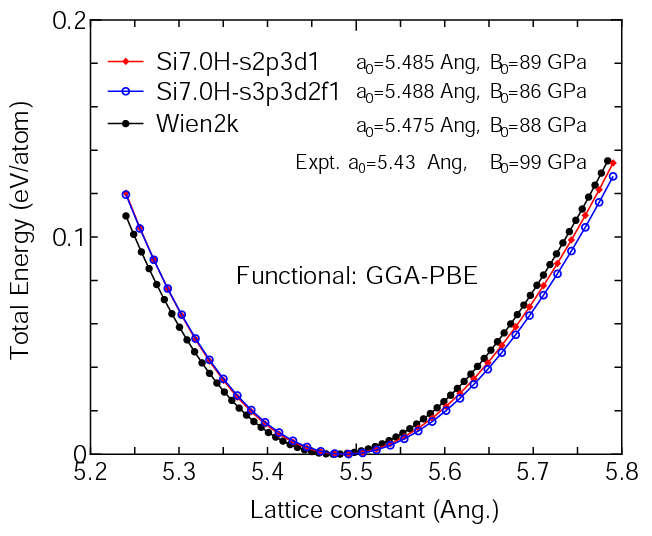
(2) Calculations of the band dispersion in the diamond structure,
where the non-spin polarized collinear calculation with the lattice constant of 5.43 Ang.
was performed using Si_PBE11H.vps and Si7.0H-s2p3d1 or Si7.0H-s3p3d2f1,
and the Fermi level is taken to be the top of valence band.
The input file used for the OpenMX calculations can be found at
SidiaH-Band.dat.
For comparison the result by the Wien2k code is also shown, where
the calculation was performed by default setting in the Ver. 9.1 of Wien2k.



